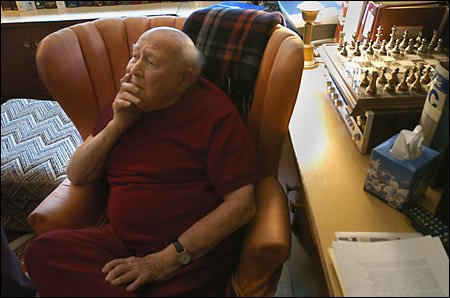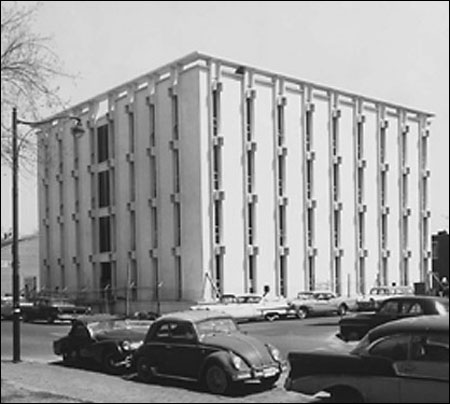Building a tradition
The Canters, contractors for generations – and for Harvard, look back

Eliot Canter ’35 remembers going to the New England Brick Co. in North Cambridge to pick out bricks for the new Hemenway Gymnasium, whose construction he was overseeing.
“These were the special rough-textured bricks, the ones closest to the fire.”
Canter, a member of the last Harvard class to receive a bachelor of science and civil engineering degree (BSCE), had gone to work full time for Canter Construction Co. three years earlier. His father, James J. Canter BSCE ’09, founded the family-owned business in 1919. The younger Canter took over in the early 1950s and ran the company until his retirement in 1980.
In addition to numerous construction projects around New England – everything from school buildings and post offices to shopping centers and racetracks – the firm built or renovated dozens of structures at Harvard. Besides Hemenway, they include the University Herbarium on Divinity Avenue, the Engineering Sciences building on Oxford Street, the Outdoor Hockey Rink (on the site of the present Bright Hockey Center), the Mallinckrodt-Converse Laboratory and Library, several buildings at the Smithsonian Astrophysical Observatory, the Business School, and many others.

“I guess you could say I’ve left my mark on Harvard,” Canter said.
Canter has no favorites among the Harvard buildings he’s worked on. “They’re all like my babies,” he said. Nor does he remember having any special problems with any of them, perhaps on account of his hands-on management style. Canter visited each construction site daily to make sure everything was going smoothly.
Staying on top of things gave him a can-do sort of outlook, even with unfamiliar construction techniques. In 1964, Canter’s firm built the Engineering Sciences Building, designed by Minoru Yamasaki, the architect of the World Trade Center. The design called for precast concrete panels to be hoisted into place by a pair of cranes.

“I remember when the first one was ready to go up, I noticed the building engineer standing over on the other side of Oxford Street behind a tree. I said, ‘What are you doing over there?’ He said, ‘Oh, I like the view from here.’ I guess he thought it was going to be a disaster, but everything turned out fine.”
If Canter has left his mark on Harvard, Harvard has also left its mark on the Canter family. What has become a century-long tradition began almost as a whim. Canter tells how his father was about to register at the Massachusetts Institute of Technology (MIT) where he planned to study engineering when a friend happened by and changed his mind.

“He said, ‘What are you doing here?’ And my father said, ‘I’m going to MIT.’ So his friend said, ‘Well, I’m going to Harvard. They’ve got an engineering program there, and I think you’d like it better.’ So they talked and after a while he was convinced, so he got on a streetcar and registered at Harvard.”
Eliot, an only child, followed his father to Harvard before joining the family business. Three out of four of Eliot’s children have Harvard degrees, and four of his grandchildren are alumni, students, or students-to-be. One grandson, Samuel Ganzfried, is graduating this year. His brother Benjamin will enter Harvard as a freshman in September 2005 and graduate in 2009, exactly a century after James J. Canter, the founder of the “dynasty,” received his degree.




